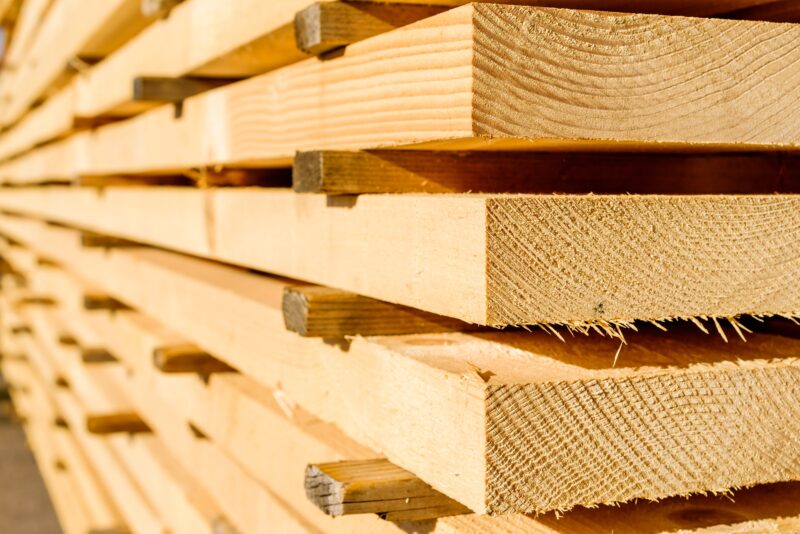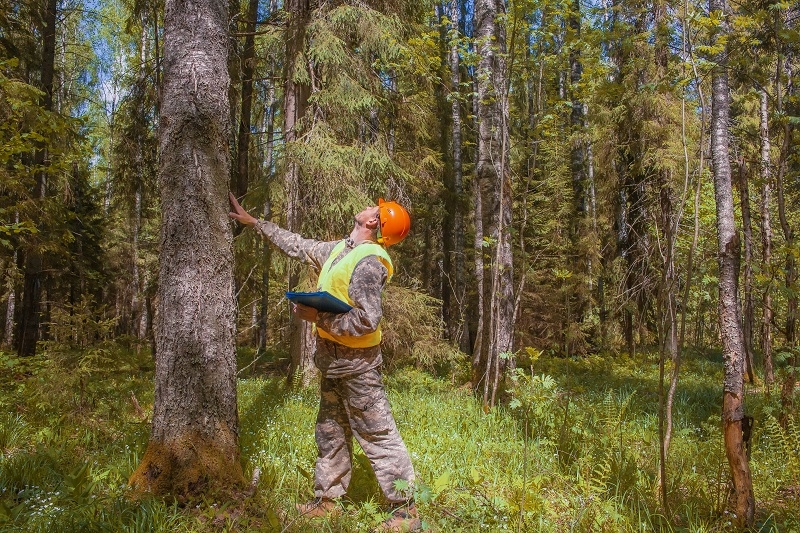Published: 30/04/19 By: Mike Bekin
Building with wood has many great benefits. Timber has been used over hundreds of years to build quality, long lasting buildings and structures. But why is it so good? Here are just a few facts that show why wood is an amazing and interesting material.
1. Timber is very versatile
Timber can be used for many applications. Not only is it used heavily in the construction industry, it can be used for sea defences, sports equipment, gazebos and decking in the garden.
2. All wood is biodegradable
Wood is capable of being completely decomposed by bacteria and other biological agents.
3. Timber is a natural insulator
Timber is five times better than concrete as insulation. Wood works well as an insulator because of all the empty space it contains in its cells. This means that wood can retain heat, as opposed to conductors such as metal which transfer heat easily.
4. Timber is a sustainable and renewable resource
A sustainable resource is one which is used or harvested in such a way that it is not depleted or permanently damaged. Provided we give them time, trees grow naturally so no energy or other raw material input is needed in creating this magnificent resource. If harvested responsibly, at a rate which the forest can continue to be healthy, timber supply can be never ending.
5. A timber building can last as long as a brick building
Depending on many external factors such as climate, weather, location and maintenance, a wooden house can easily last as long as a brick one. Wood performs better than brick, particularly in areas prone to high winds or earthquakes.
6. The terms softwood and hardwood describe the leaves, seeds and structure of the tree rather than the strength of timber they produce
Although overall softwoods are less dense than hardwoods, it is not density alone that determines which category the wood falls under. Hardwoods come from trees which are flowering plants and keep their seeds in an outer casing such as a fruit or acorn. Softwoods, in contrast, derive from evergreen trees which spread their seeds on the ground using cones and occasionally nuts.
7. 12% of the UK is woodland
This figure is low for a European country. In comparison, Germany has 32%, Italy has 35%, France has 37%, Russia has 49% and Finland has a staggering 72%.
8. It can take decades for trees to reach maturity
All trees reach maturity at different times. Some oak trees mature when they are 25-30 years old whereas apple trees tend to take 6-10 years depending on whether they are semi dwarf or standard varieties. Other trees reach maturity only when they become a certain size.
9. Trees do not die of old age
Although old age can be a contributing factor, it is never the main cause of death for a tree. Trees are killed by elements which are outside of their control. These can include insects, the weather conditions, or be the result of people. However, when a tree gets older, it has more trouble protecting its inner heartwood which means it cannot fight off damage as effectively as younger trees.
10. Some trees communicate with each other
Ecologists have found fungi that forms underground communication networks between trees. Older trees, known as “mother” trees, are the centre of the network. Studies have shown that the trees share resources using these networks and that they also use the networks to warn neighbouring trees about impending attacks from pests.
11. There are thousands of different species of tree on Earth
It is believed that there are over 60,000 types of trees in the world after extensive studies were carried out. Apart from the polar regions where there are none, North American had the fewest number of different species with approximately 1,400. More than half of the trees can only be found in one country and about 300 species were identified as critically endangered. The most common trees found in the UK include ash, aspen, silver birch, oak and chestnut.
12. More trees are planted than harvested within the European timber industry
When using reputable suppliers for timber, more trees are planted for every tree harvested, creating an increasing sustainable supply of wood for future generations.
13. Some trees can live for thousands of years
Some trees across the world are thought to be 5,000 years old. The oldest tree is thought to be a Norwegian Spruce found in Sweden which is believed to be over nine and a half thousand years old. In the UK, The Woodland Trust revealed there are at least 117 oak trees which are around 1,000 years old.
14. Softwoods account for about 80% of the world’s timber production
Although pine is a softwood, it is denser than even some hardwoods, making it a popular choice as timber as it’s a more affordable option. Oak on the other hand is the most popular and widely used hardwood.
15. Trees get most of their nutrition from the atmosphere
90% of their nutrition is from the air, with only 10% coming from the soil.
Who is Eco Choice?
Eco Choice are specialist suppliers of certified timber and recycled plastic products. We were formed in 2005 with the aim of promoting FSC certified timbers to the UK construction industry. We offer products from a wide range of different timber species, including Iroko wood and Larch wood. We are passionate about supplying our clients with independently certified timber products while encouraging responsible and sustainable practices at the source level. To find out how we can help you and to get a quick, no obligation quote, please call us on 0345 638 1340, email us on info@ecochoice.co.uk or for more information about our sustainable timber products, please visit our website.

